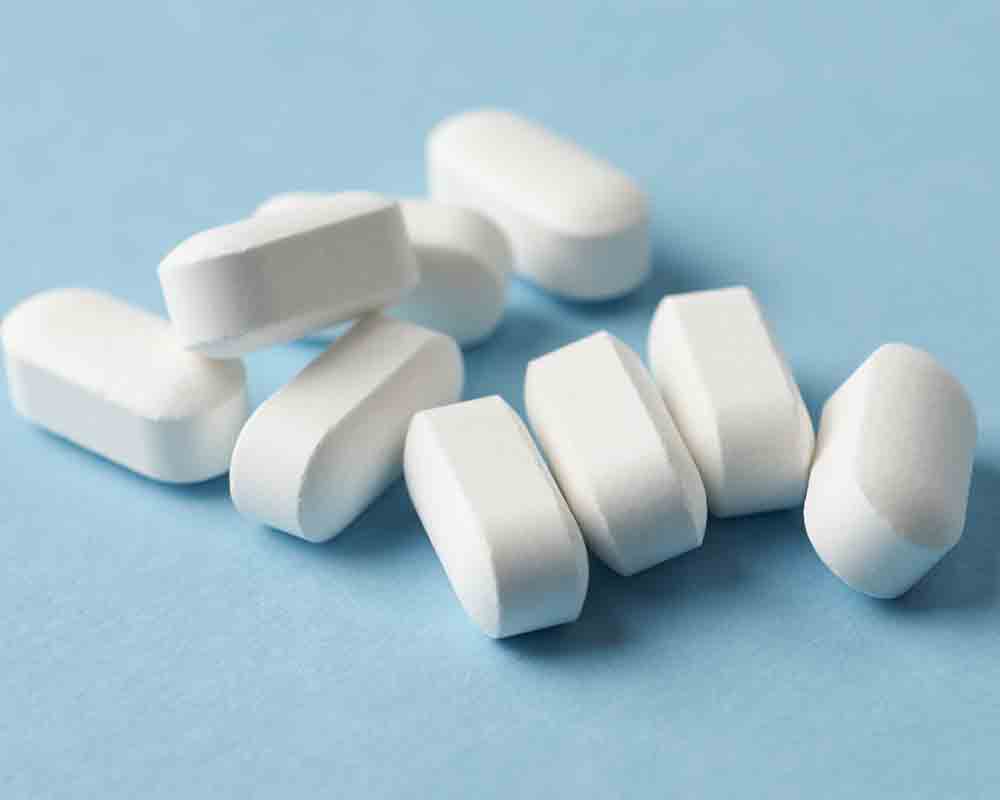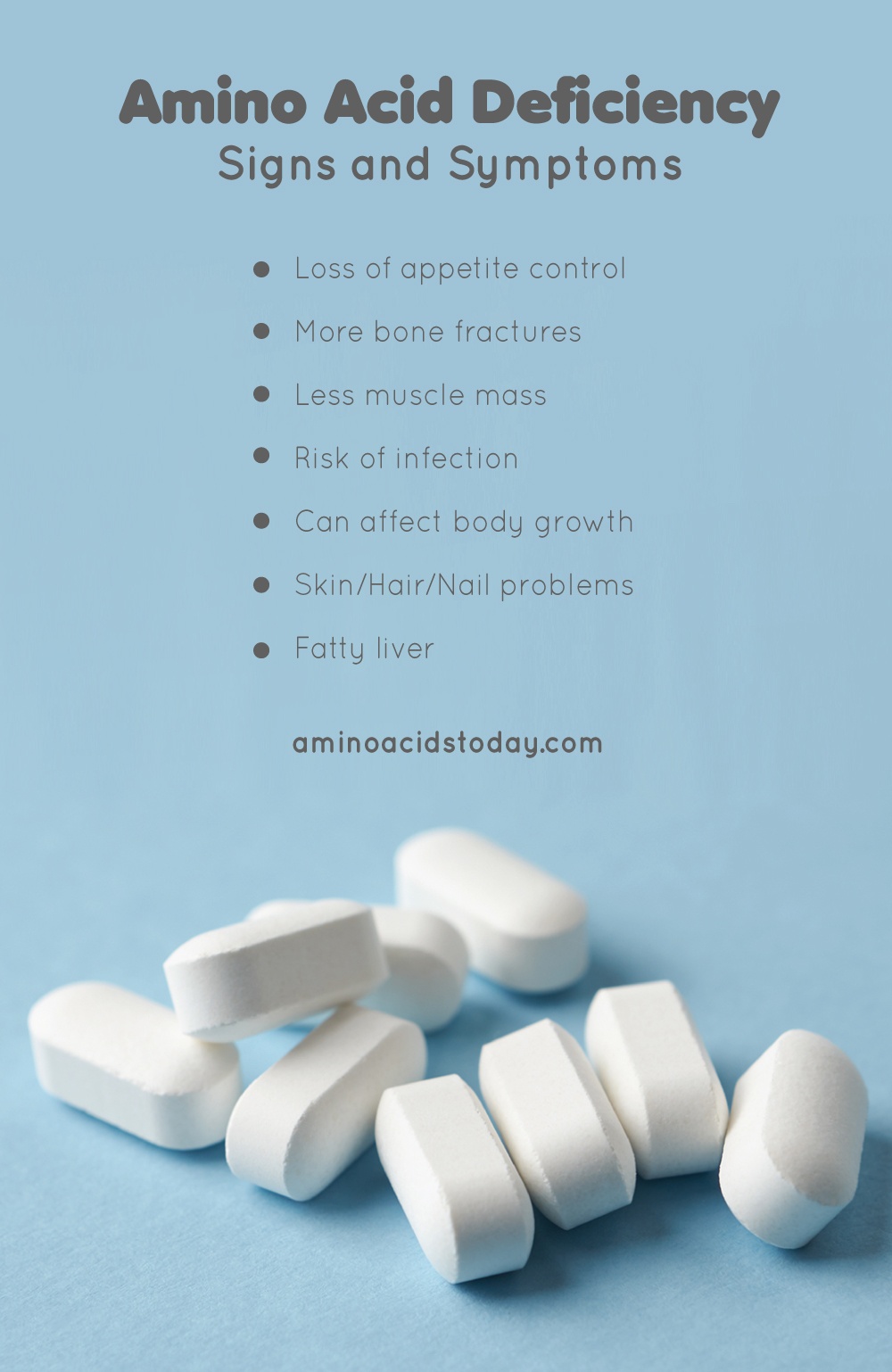
Are you consuming enough amino acids? You might be experiencing an amino acid deficiency. There are 20 amino acids and it’s important to have enough of all of them. The human body produces the 11 “non-essential” aminos while we must get the 9 “essential” aminos from food and supplements. Usually, the deficiencies are from EAAs but sometimes they’re from NEAAs when the body doesn’t manufacture enough NEAAs. It’s important to have enough of all aminos for functions like building/repairing muscle, appetite control, and fatigue delay. So if you observe the symptoms from lack of aminos it’s important to boost your levels immediately.
There are several signs of this condition including a higher risk of infection, hair/skin/nail issues, and loss of muscle mass. These could be signs of other conditions so it’s important to look for multiple symptoms to verify that it’s a deficiency of amino acids. The next step is to determine which amino acid is causing the deficiency so you can boost your levels as quickly as possible. The main options are increasing your intake of certain foods while the other option is to take dietary supplements. Both options can effectively boost your intake of EAAs or NEAAs to handle the deficiency.
How Much of Each Amino Acid Is Enough?
This is the first big question. There are 20 aminos and the focus should be on the essential aminos acids (EAAs) since they’re the ones we must get from foods/supplements. The amounts required differ greatly.
For example, you need about 39mg of Leucine daily. This is the highest amount among all EAAs. Leucine is one of the branched-chain amino acids (BCAAs) but there are two others plus the other EAAs. This will help to maximize the body/brain functions that involve proteins/amino acids.
It can be tough to track all 20 amino acids and even the essential aminos. What’s the solution? It’s better to consume protein from a wide range of sources including animal and plant. Some good options include:
- Meat/Chicken
- Fish/Shellfish
- Eggs
- Whole Grains
- Nuts/Seeds
- Beans
- Dairy
One option is “complete” proteins like beef, eggs, and soybeans. These foods include all 9 amino acids required by the human body and the amounts needed daily. For example, you could consume scrambled eggs for breakfast, tuna salad for lunch, and beef steak for dinner.
Then there are also “incomplete” proteins like beans and whole grains. These foods might even have all 9 EAAs but not enough for the whole day. When you pair incomplete proteins like kidney beans and brown rice, the dish turns into a complete protein.
Like general nutrition itself, the key is to eat a wide range of protein sources. This can help to make sure you’re getting all the amino acids you need. For example, even a peanut butter sandwich on whole wheat can provide similar nutrition you’d get from animal-sourced proteins.
Dietary supplements like protein powders and BCAA tablets can also help add to your intake of amino acids. The critical thing is to make sure you’re adding amino acid sources instead of replacing them. This will help to produce the best results.
Amino Acid Deficiency: Signs and Symptoms
1. Loss of appetite control
This might be a surprising one. Some amino acids help to fuel the brain’s “neurotransmitters.” When they don’t get the message that you’re full you’ll be more likely to over-eat and thus gain weight. That could even lead to obesity.
2. More bone fractures
If your bones aren’t getting enough protein/aminos this increases the risk of bone breaks/fractures. When you don’t have enough nutrients like amino acids this affects the bone’s strength and risk of breaking. That can cause a lot of problems.
3. Less muscle mass
This shouldn’t be surprising since muscles are made up of protein and protein is made up of amino acids. This is one of the main signs you don’t have enough of certain aminos including BCAAs and others.
4. Risk of infection
This is due to the amino acid deficiency causing problems with your immune system. When that happens it can affect how well your body can fight infections. This is critical because it can cause other health issues. After all, your body is weaker.
5. Body growth
When children don’t get enough amino acids this can affect their physical development. It’s important to get enough protein through various sources. They include:
- Seafood
- Eggs
- Cheese
- Almonds
- Yogurt
- Chicken
- Broccoli
- Lentils
- Seeds
- Fish
- Quinoa
6. Skin/Hair/Nail problems
When you’re not getting enough aminos this can affect all three because proteins are a key substance of skin, hair, and nails. That includes different ones like collagen, elastin, and keratin. They’re all made up of amino acids. When you don’t have enough of them it can affect how strong your skin, hair, and nails are.
7. Fatty liver
This is another common issue related to protein/amino deficiency. When that happens there’s a greater chance of fat buildup known as fatty liver. This is especially common among alcohol drinkers although non-alcoholic fatty liver also exists.

Top Foods to Boost Amino Acids
1. Dairy
You have lots of options like milk, Greek yogurt, cheese, and even kefir (fermented dairy). These are all complete proteins so you get all 9 EAAs and a full day’s worth from them. You should also consider full-fat dairy since it’s higher in healthy fat versus low/no-fat milk.
2. Grains/Nuts/Seeds
These are all excellent sources of proteins/aminos. Make sure to eat a wide variety of each so you get different vitamins/minerals from them. Whole grains are also better than refined grains since you get more protein, fiber, and other nutrients for better health.
3. Beans/Peas
It’s a good idea to consume either or both on a daily basis. They’re loaded in proteins, amino acids, vitamins/minerals, and fiber. Some like soybeans are complete proteins so they have a similar nutritional value as eggs and dairy.
4. Fish/Shellfish
Both of these foods are ones you should consider eating at least 2x weekly. Make sure to go with fatty fish for omega-3 fatty acids, which you can also get from shellfish. Health experts generally recommend fish and chicken as healthier options than beef and pork. Try to limit your red meat for better health.
5. Eggs
They’re high in cholesterol but it’s the good kind. You also get other nutrients like amino acids, healthy fat, and vitamins/minerals. If you have high cholesterol then consider just consuming the egg whites. However, keep in mind most of the nutrients are in the yolks.
6. Lean meats/poultry
These are both good sources of amino acids since they’re complete proteins. You can get enough of all 9 EAAs for the day in foods like pork, beef, and chicken. These foods are high-protein and somewhat low in saturated fats since they’re lean meat. You can also get different aminos from different meats to help prevent amino acid deficiency.